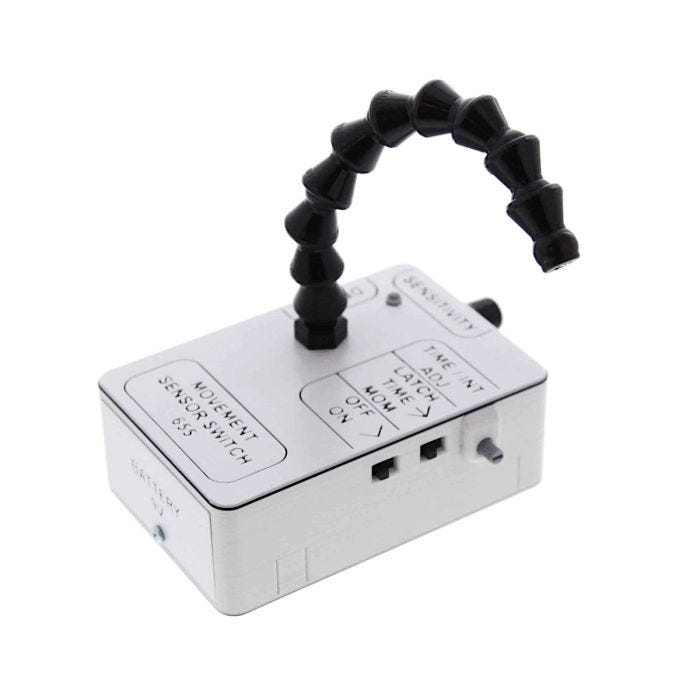Enabling Devices Movement Sensor Switch

In Stock
- SKU
- 1007516
Product Description
Unique, adjustable sensor switch encourages even the most hypoactive person to move. Flexible arm can be positioned for easiest access by user. Sensitivity can be adjusted to activate with even the slightest movement in front of the sensor. Can be set for momentary, latch, or timed mode. 4-1/2”L x 2-1/2”W x 1”H. Operates with 1 9-V battery (not included).
- Adjustable position arm
- Adjustable sensitivity
- Provides visual feedback - light comes on when activated
Momentary Mode
Operates as a momentary switch. The connected device stays on as long as there is motion in front of the sensor.
Latch Mode
Operates as an on/off switch. Connected device goes on with the first motion and stays on until it detects another motion, which turns it off.
Timed Mode
Operates as a timed switch. Connected device goes on for a set amount of time (1 - 120 seconds) when switch is activated, then turns off at the end of that time.
Specifications
| Manual | Download the manual for Enabling Device Movement Sensor Switch. |
|---|---|
| Brand | Enabling Devices |
| Assembly Required | No |
Reviews
Tips
| Tips | Selecting a Capability Switch Capability switches are a core feature of access technology. They allow people with physical and/or cognitive disabilities to interact with technology. The proper switch opens up worlds of access communication devices, environmental controls, computer software, and mobile devices. Switches come in different sizes and shapes. To choose the switch that works best for a particular circumstance, there are some important factors to consider. Action What actions can the person reliably perform? What action or body part can the person use – hand, head, eyes, mouth? Activating the switch should not cause undue fatigue, discomfort or pain, or compromise muscle tone. Many switches have the activation surface on the top, but others allow activation on other surface areas. There are switches that can be activated by different body parts or actions. Targeting Can the person hit a small target or do they need a larger one? Can they hit the top of a switch or other area? Activating the switch should not cause undue fatigue, discomfort or pain, or compromise muscle tone.Many switches have the activation surface on the top, but others allow activation on more surface area. Amount of Force How much pressure can the person consistently exert to activate the switch? Can they press on it or just touch it? There are switches that can be activated with a light touch or by proximity. Perception Does the person have perceptual difficulties? Do they need feedback from the switch (auditory, tactile, visual)? Most switches provide tactile and auditory feedback. Device What type of device does the person want to use the switch with? Some switches are designed to work with a specific item - such as a Bluetooth switch for an iPad. |
|---|
Warnings
| Choking Hazard | No |
|---|---|
| Sterile | No |